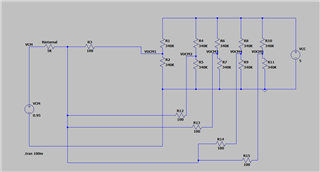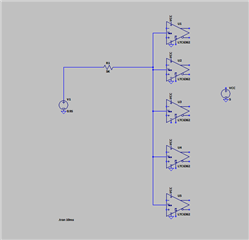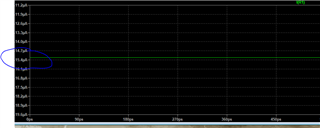Hi,
-We are using an ADS5294 VCM output pin 68 to connect to 5x differential opamps LTC6362 VOCM inputs. Each VOCM input of each LTC6362 has a 100 ohm and 0.1uF LPF.LTC6362 are powered by 5V Single ended supply. ADS5294 is powered by 1.801V precisely.
-Differential outputs of the LTC6362 are DC coupled( after antialiasing filter) to the inputs of the ADS5294. ( the common mode voltage inside ADS5294 on AIN+/- pins should not clash with the common mode of LTC6362 as they are the same voltage( Spice simulation clearly shows that, even the ADS5294EVM board uses DC coupled )
- The VOCM input impedance of LTC6362 is 170K( simulated in the below spice simulation as 2x 340K ohms as per LTC6362 data sheet)
The total current through VCM pin is 24uA in my simulation below, data sheets states 5mA VCM current capability( that is why i did not put a buffer)
-We are using our own board - not ADS5294EVM
We are reading VCM = 1.15V on each LTC6362VOCM input and on ADS5294 pin68. Spice simulation shows that in order to see VCM=1.15V, the internal resistance of the VCM pin 68 of ADS5294 must be ~5K. That implies the VCM is unbuffered, is it?


Question 1: What is the VCM pin output impedance of ADS5294? Is Vcm Output pin buffered or unbuffered?
Question 2: What could cause VCM to be 1.15V . Do I need soft reset before i measure the pin 68
Thanks,
LT



